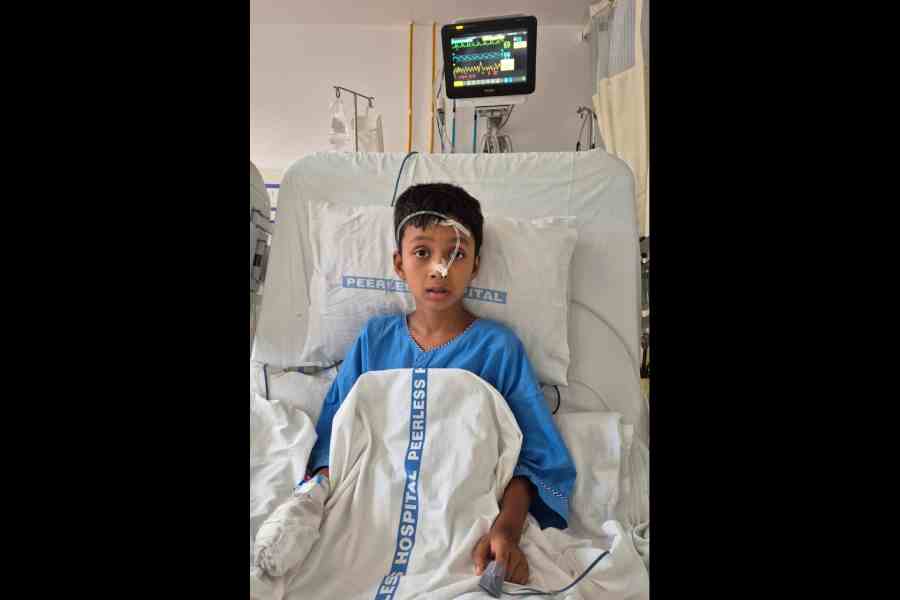.jpg)
If you’ve started sneezing at the onset of winter, you’re finned aquarium friends are susceptible too. Aquarium fish may acquire various diseases around the year and if unattended, it may even be fatal.
Cause of concern
Most diseases in aquarium fish are caused by a common set of problems or a combination of them —
♦ Aquatic plants- Pet-lovers who want to beautify their aquarium often hop over to the neighbourhood lake, pluck out plants growing underwater and put them into their aquarium. This is unsafe as the plants bring along germs and insects. Aquatic plants need to be treated before being introduced to an aquarium.
♦ Over-population- Fish need ample space to swim in the aquarium. A stuffy environment reduces the oxygen level, spreads diseases and even leads to fights among the fish.
♦ Fluctuation in water temperature. This is common in winter.
♦ Fluctuations in Ph and salinity level
♦ Contagious diseases- One sick fish could spread its disease to others. The sick fish needs to be attended to immediately and in some cases, isolated.
♦ Excess feeding
Common diseases
Fin rot
Symptom: The fins, and sometimes tails, start rotting and wear off. They look as if burnt. This is common in monsoon and summer as the temperature changes.
Common in: Angel fish, Sibram, Kissing Gourami
Cure: Use the antibiotic Tetracycline that is available at pet shops. Pour the medicine on the fish’s dry food in the ratio 250mg per kilo of food and let it soak. Then release the food in the water for the fish to ingest. Do this for seven days.
The fish would get weak after antibiotics so on the eighth day give them vitamin B complex in the same fashion. The dosage would depend on the brand you buy.
White spot
Symptom: This is a parasite that appears all over the fish’s body like tiny sabu danas. This is very common during temperature change.
Common in: Flowerhorn, Discus, Clown Loach
Cure: Use the thermostat in the aquarium to raise the temperature. Do this gradually and take it to a maximum of 35° C. You can also take a separate container and mix 250g of non-iodised salt (saindhab noon) for every 5l of water. Remove the sick fish from the aquarium and release him here for five to 10 minutes. If the fish gets restless remove it sooner and return to the aquarium. But again, you have to account for the temperature difference between the aquarium and container.
Pick up the fish along with some aquarium water in a plastic bag and keep the bag in the new container for a while. Once the fish is acclimatised to the new temperature, release it.
Mouth fungus
Symptom: The area around the fish’s mouth appears white, all though the fungus affects the fish internally too. The disease causes tremendous weakness. It’s common in summer and monsoon.
Common in: Angel fish, Molly, Platy
Cure: Use a medicine in the Fluconazole group. Follow the dosage mentioned on the label and add it to a bucket of water. Release the fish here for five to seven minutes and then return to the aquarium. If there is no change after a week, repeat. Again, follow the directions explained above to make sure the fish can adjust to the temperature change.
Fin and tail rot
Symptom: This is an extreme case of fin rot where even the tail starts rotting badly. The fish loses its brightness and starts looking dirty, gets rashes and almost stops moving.
Common in: Kissing Gourami, Sibram
Cure: Use Tetracycline in the proportion of 250mg per 1kg of dry food and feed the fish. Do this for seven days and on the eighth day give vitamin.
Anchor disease
Symptom: This is a parasite that clings to the fish’s body. They appear like needle-tips.
Common in: Goldfish, Carp, Cichlid
Cure: Hold the fish gently and pinch out the parasites. If you use tweezers for this, sterilise it first by burning it for a few seconds. Then use cotton to dab potassium permanganate on the body and use anti-parasitic medicine in the water, as per the dosage on the label.
Black spots
Symptom: The fish’s body and tail get black and brown spots of around 2mm diameter. Sometimes they appear near the eyes and mouth too.
Common in: Goldfish, Carp
Cure: Mix in the water anti-fungal and antibiotic medicines for black spots. Both are easily available in the market.
Dropsy
Symptom: The fish swells up and the scales stick out like on a porcupine. Also, the fish is unable to move about and stays put in a corner. It is also unable to eat. This is common after fish have laid eggs.
Common in: Carp, Gouramis
Cure: The first thing to do if one of your fish contracts dropsy is to isolate it. Keep it in a separate aquarium. Mix mild chloromycetin into half cup of water and pour into the new aquarium in the ratio of one teaspoon is to 4 litres of water. If there is no change in the fish, repeat after seven days.
Fish pox
Symptom: These are white spots that appear all over the body and grow in size up to around 2mm diameter. They grow in size very quickly, within a few hours.
Common in: All fish
Cure: There is no medicine that cures this but if you keep the water very clean and raise the temperature gradually it should reduce in a few months. Add iodised salt to the water as per requirement as when the fish get weak, this acts as saline drip for them.
?To be continued
Address your pet fish-related queries to Anirban Kar at saltlake@abpmail.com

.jpg)








